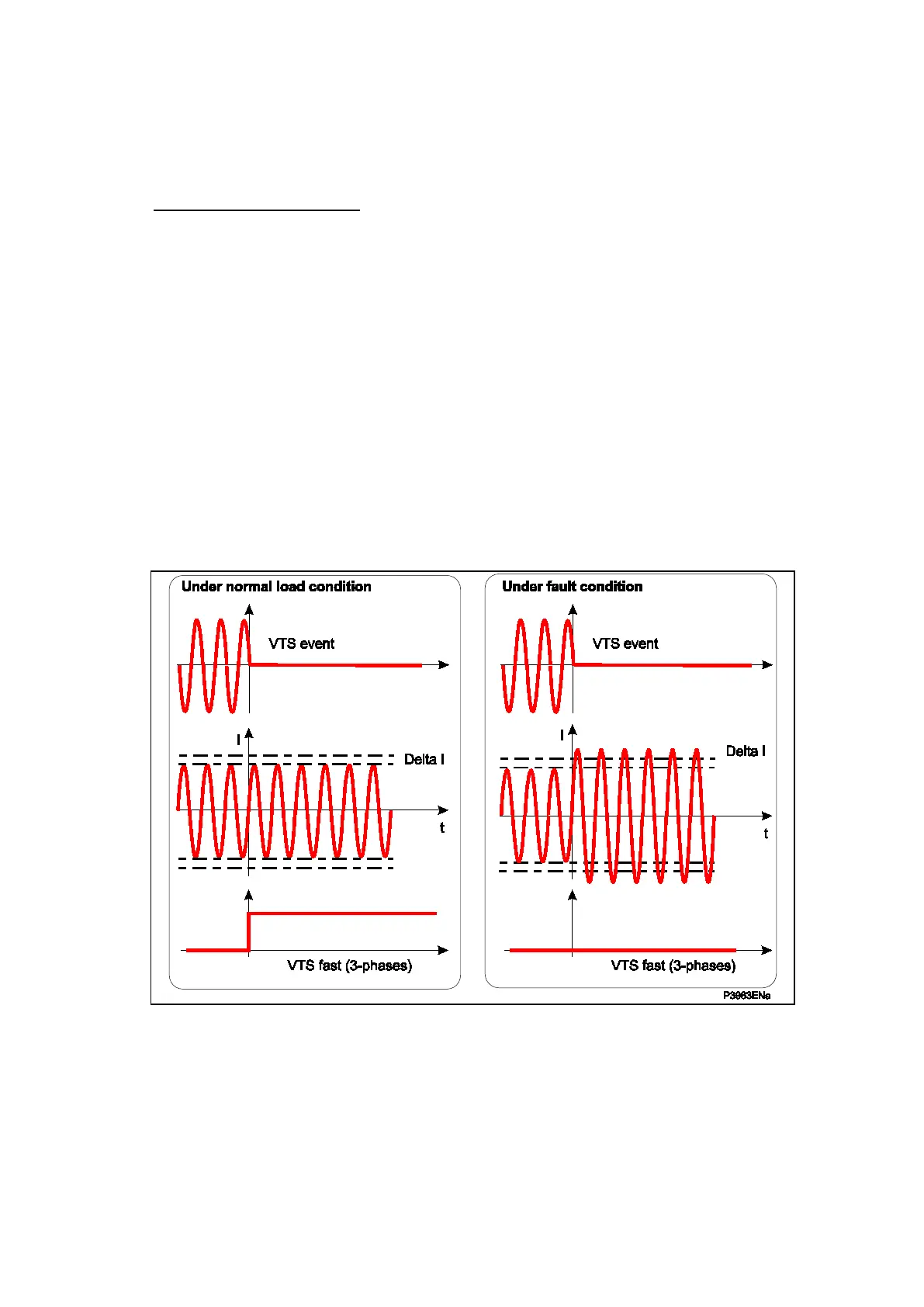44x/EN AP/Hb6
-138 MiCOM P40 Agile
gives operation for the loss of one or two phase voltages. Stability of the VTS function is
assured during system fault conditions, by the presence of I0 and/or I2 current. Also, VTS
operation is blocked (and distance element unblocked) when any phase current exceeds
2.5 × In.
Zero Sequence VTS Element:
The thresholds used by the element are:
• Fixed operate threshold: V
N
≥ 0.75 x Vn;
• Blocking current thresholds, I
0
= I
2
= 0 to 1 x In; settable (default 0.05In),
and Iph = 2.5 x In.
5.8.1.2.2 Loss of All Three Phase Voltages Under Load Conditions
Under the loss of all three phase voltages to the relay, there will be no zero phase sequence
quantities present to operate the VTS function. However, under such circumstances, a
collapse of the three phase voltages will occur. If this is detected without a corresponding
change in any of the phase current signals (which would be indicative of a fault), then a VTS
condition will be raised. In practice, the relay detects the presence of superimposed current
signals (delta I), which are changes in the current applied to the relay. These signals are
generated by comparison of the present value of the current with the value one cycle before.
Under normal load conditions, the value of superimposed current should therefore be zero.
Under a fault condition a superimposed current signal will be generated which will prevent
operation of the VTS.
Figure 99: Line energisation – superimposed current under
fault condition (VT non isolated)
If a VT were inadvertently left isolated prior to line energisation, on line energisation will
change in current. If the phase currents do not exceed nominal current (superimposed
current – delta – is null), VTS condition will be raised. If a fault condition is detected,
superimposed current signal is generated and prevents operation of the VTS:

